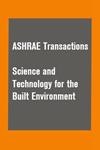基于视觉的无人机在建筑数字化、诊断和能效评估中的应用研究*
IF 1.6
4区 工程技术
Q3 CONSTRUCTION & BUILDING TECHNOLOGY
Science and Technology for the Built Environment
Pub Date : 2023-09-27
DOI:10.1080/23744731.2023.2261807
引用次数: 0
摘要
摘要采用无人机进行能源效率评估是一项很有前途的技术。尽管有一些有趣的想法可以实现流程自动化,但大多数操作仍然是手动完成的。提出了一种综合方法,从商用无人机收集的RGB和IR图像中识别维护需求。选取作为案例研究的真实建筑,通过Structure from Motion在三维环境中进行重建,同时对红外信息进行整合和适当缩放,得到三维点云模型,该模型为每个点提供:(i)其在空间中的位置信息(ii)数据采集阶段测量的外表面温度。然后将点云分割到围护结构的不同侧面,以识别立面的每个部分,并与重建建筑物预期条件的模型进行比较。此程序使开发自动化管道能够识别建筑围护结构中的缺陷和故障,并建议纠正措施。免责声明作为对作者和研究人员的服务,我们提供此版本的已接受手稿(AM)。在最终出版版本记录(VoR)之前,将对该手稿进行编辑、排版和审查。在制作和印前,可能会发现可能影响内容的错误,所有适用于期刊的法律免责声明也与这些版本有关。本文章由计算机程序翻译,如有差异,请以英文原文为准。
On the Use of Vision-based Drone Application to Building Digitalization, Diagnostics and Energy Efficiency Assessment *
AbstractThe adoption of Unmanned Aerial Vehicles for energy efficiency assessment is a promising technique. Although there are some interesting ideas to automate the process, most of the operations are still done manually. An integrated methodology is presented to identify maintenance needs from both RGB and IR images collected with a commercial drone. The real building selected as case study is reconstructed in a 3D environment through Structure from Motion, while the infrared information is integrated and properly scaled on it to obtain a 3D point cloud model that provides, for each point: (i) information about its position in the space (ii) external surface temperature measured during data gathering phase. The point cloud is then segmented into the different sides of the envelope to identify each part of the façade and compared with a model that reconstructs the expected conditions of the building. This procedure enables the development of an automated pipeline to identify defects and failures in a building envelope and to suggest corrective actionsDisclaimerAs a service to authors and researchers we are providing this version of an accepted manuscript (AM). Copyediting, typesetting, and review of the resulting proofs will be undertaken on this manuscript before final publication of the Version of Record (VoR). During production and pre-press, errors may be discovered which could affect the content, and all legal disclaimers that apply to the journal relate to these versions also.
求助全文
通过发布文献求助,成功后即可免费获取论文全文。
去求助
来源期刊

Science and Technology for the Built Environment
THERMODYNAMICSCONSTRUCTION & BUILDING TECH-CONSTRUCTION & BUILDING TECHNOLOGY
CiteScore
4.30
自引率
5.30%
发文量
78
期刊介绍:
Science and Technology for the Built Environment (formerly HVAC&R Research) is ASHRAE’s archival research publication, offering comprehensive reporting of original research in science and technology related to the stationary and mobile built environment, including indoor environmental quality, thermodynamic and energy system dynamics, materials properties, refrigerants, renewable and traditional energy systems and related processes and concepts, integrated built environmental system design approaches and tools, simulation approaches and algorithms, building enclosure assemblies, and systems for minimizing and regulating space heating and cooling modes. The journal features review articles that critically assess existing literature and point out future research directions.
 求助内容:
求助内容: 应助结果提醒方式:
应助结果提醒方式:


